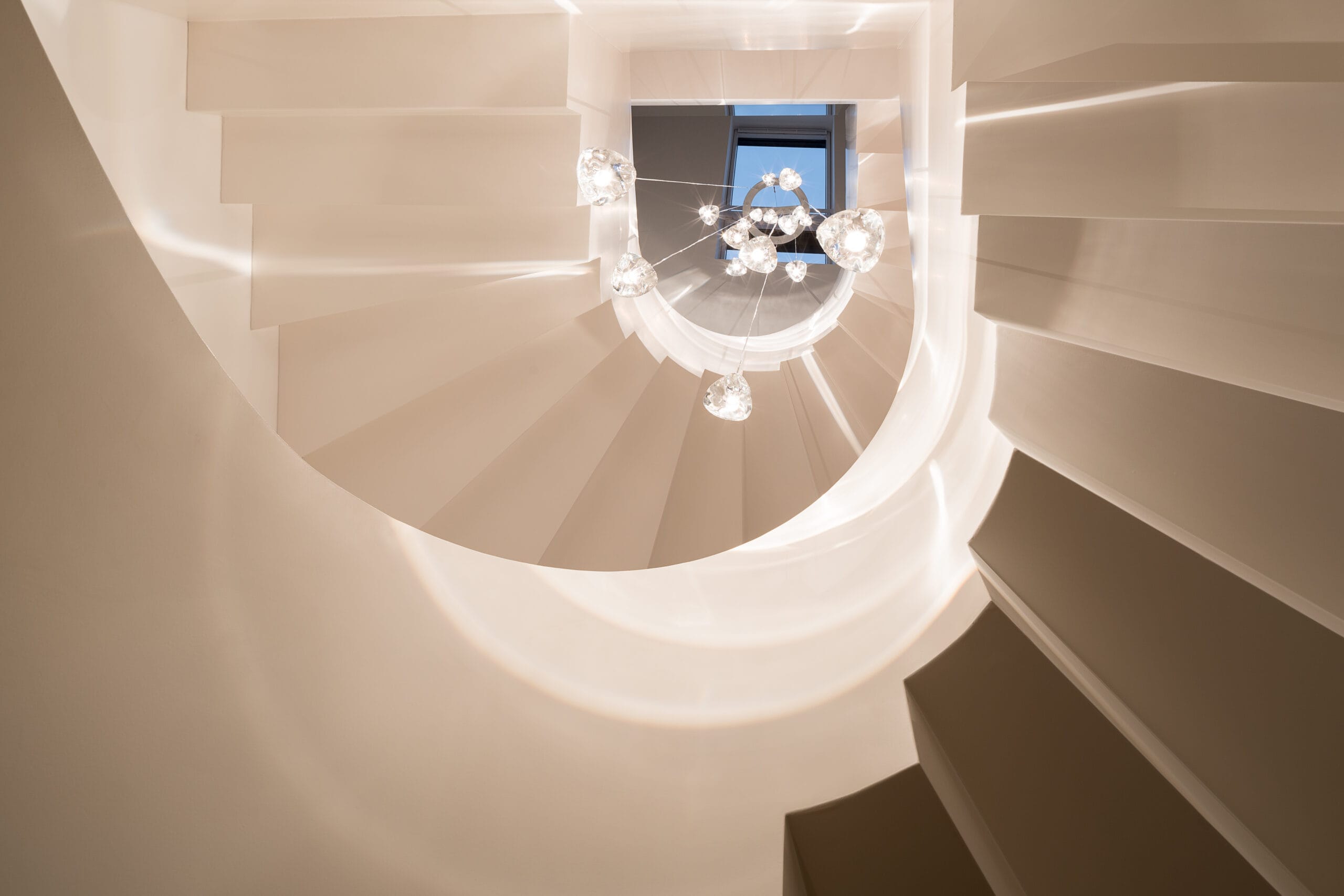
The proportion of any internal space must always be related to the building in which the internal space is located, but another important factor that considers the proportion of the human environment is the human body. For a long time, designers and architects have tried to establish ideal proportions.
Of all the axioms about proportion, the most famous is the golden section, established by the ancient Greeks. According to this axiom, a line should be divided into two unequal parts, where the first part is the second part and the second part is the whole.
Leonardo da Vinci takes the man’s belly button as the center and uses his arms to enclose the man in the center of a circle, designing a character for the ideal man. French architect Le Corbusier also developed a proportional theory called “modulus” based on the study of human proportions. However, these rules are guidelines at best. They can never replace the designer’s sight and judgment, so it can be reasonably predicted that the sensitivity of trying to make a powerful computer replace the designer is far from perfect.
As mentioned earlier, the need to change the scale and spatial relationship in the environment seems to be natural, almost physical and psychological. By considering some extreme examples, perhaps the need for “personal” environment and scale can be best understood. For a person flying on a 30,000-foot-high airplane, the scale of anything seen on the ground seems so small that it can’t keep up with the reality of the object. People who are afraid of high altitude are rarely disturbed by the plane’s field of vision, because the distance to objects on the ground has exceeded the normal sense of proportion. Similarly, a person’s reaction to the scale of a small house is completely different from that of a large tall building. The details of patterns, textures and materials are accepted and expected in small structures because they have meaningful proportions relative to people. Similarly, the sculptural decorations on the tops of early skyscrapers are now absurd.
Almost all principles of interior design can be understood through clear analysis and common sense, without following dogmatic rules. If you put a beautiful 18th century avant-garde (perhaps more than 8 feet high) in an apartment with a ceiling height of only an inch higher than the furniture, it will obviously look too large. If you plan a space so that all heavy and bulky furniture is pushed to one end of the room, and there is nothing on the other side, the room will obviously lose its balance. However, the balance and symmetry that violate the design principles will result in a very formal, very traditional and somewhat dull interior decoration. Careful symmetry is a rule generally accepted during the Renaissance. In any classic building, a well-balanced and symmetrical appearance can be ensured, just as most formal and classic interior designs have a strict balance.
It is now recognized that balance can also be based on asymmetry. The architecture and interior design of the 20th century consciously broke many rules handed down from the past. It is more important to express the purpose of the building or space. At one time, theaters, opera houses, or concert halls exhibited certain forms and shapes that were traditional, without real consideration of line of sight, seating distance from the stage, or acoustics.
Balance and symmetry, color, pattern and repeatability have always been the adherence to tradition in the past. Until recently, many interiors were painted dark, often ignoring the fact that light reflection was adversely affected and no real contrast or sparkle embellishment was obtained. However, in many modern rooms, most surfaces remain neutral or light-colored, and one wall may have a strong color or texture. An interior with uniform overhead lighting may be an efficient work space, but lacks features that can be achieved by providing some accent lighting in a small area.
The designer’s attention to the honesty of materials and textures has led to changes in some of the conventional practices of interior decoration, such as the use of strong wallpaper and flower prints. Any interior decoration with too many different patterns, too many textures and too many repetitive features will appear too strong, too busy, over-designed and confusing. Designers often try dominant themes or ideas, whether it’s color, form, texture or some rhythmic pattern. It must also be noted that design is affected by changes in attitude and fashion. The art and architecture movements of the 1950s and 1960s had an impact on interior design, the direction of which was to emphasize pure form, without superfluous decoration and expressiveness of materials. However, recently, a reaction in the field of painting and sculpture has had an impact. For example, although its ideas often consciously deny or destroy the visual clarity of existing architectural design features, the use of large graphic elements (hypermaps) indoors has become popular and accepted.
Most interiors consist of a series of interconnected spaces. It is important to design each space in an orderly relationship not only in terms of planning but also in terms of visual effects. A successful interior should have cohesion in each area, and cohesion as a whole. It must first be related to buildings and architectural concepts.

